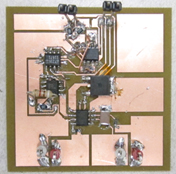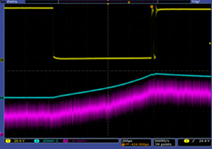LIBRARY
Integrated Current Sensor using Giant Magneto Resistive (GMR) Field Detector for Planar Power Module

- High bandwidth
- High reliability
- Compact size
- Consistent measurement over wide range of temperature
- Repeatable packaging process
- Low extra cost for integration
The bandwidth of the sensor should be high enough to sense at the switching frequency of the current. The sensor should be durable considering the application of the planar module is the automobile. The coolant temperature of the automobile is usually 105°C, and the ambient temperature seen by the current sensor is even higher by the influence of the additional power loss from switching devices. The consistent measurement capability over a wide range of operating temperaturesa is important in order to integrate the current sensor into the module. Above all, the compact size of the sensor is important to truly integrate a current sensor into the module. Some current-sensing methods are reviewed based on the above parameters, and categorized according to their characteristics. After a detailed review, the GMR sensor was chosen as an integratable current-sensing method.
As mentioned earlier, the GMR sensor in the planar module is highly influenced by the change of junction temperature. The measurement error that came from the varying ambient temperature was experimentally measured, and the measurement result is shown and analyzed in the paper. The GMR sensor is a magnetic-field detector, so the magnetic-flux distribution of the planar power module had to be very carefully analyzed. The paper also shows the magnetic-flux distribution based on the finite-element analysis (FEA) using Maxwell 15, as well as the optimum location of the GMR sensor in the planar power module. Based on the simulation result, a test board was fabricated as designed, including the GMR sensor on top. Preliminary measurement results of the GMR sensor contained excessive noise that had to be attenuated to be used for over-current protection. The design of the signal-conditioning circuit and over-current protection circuit is reported in the paper.
























































































